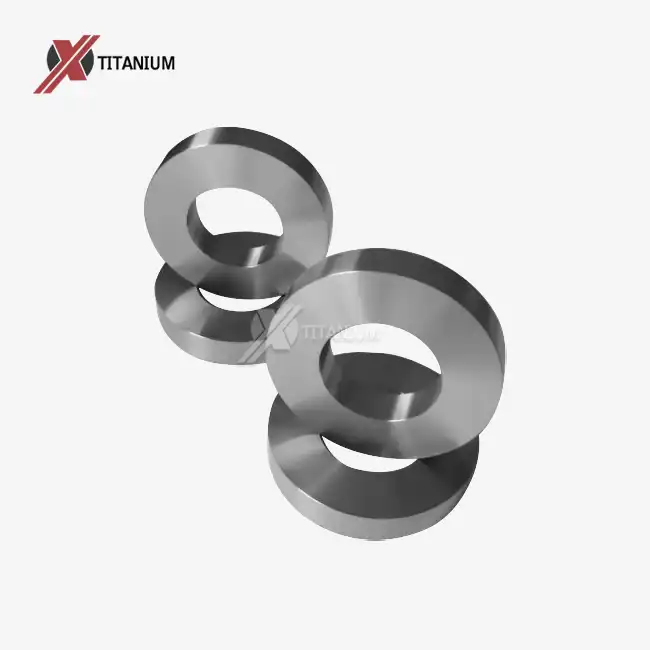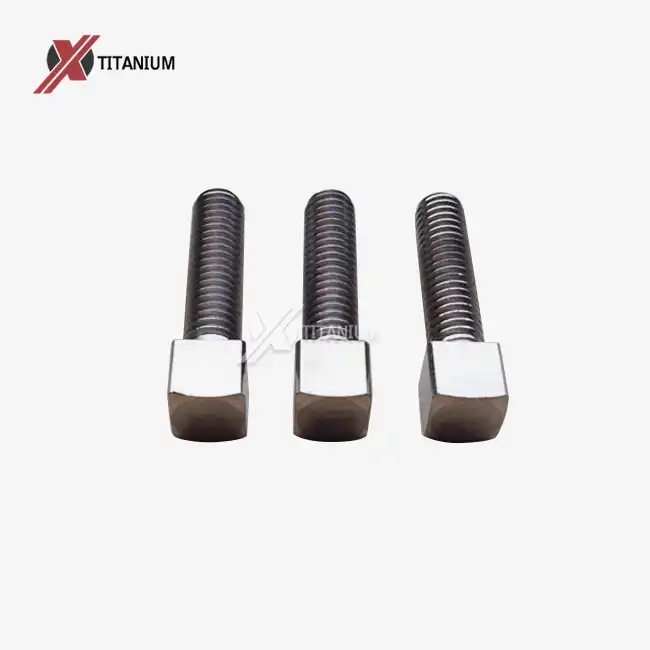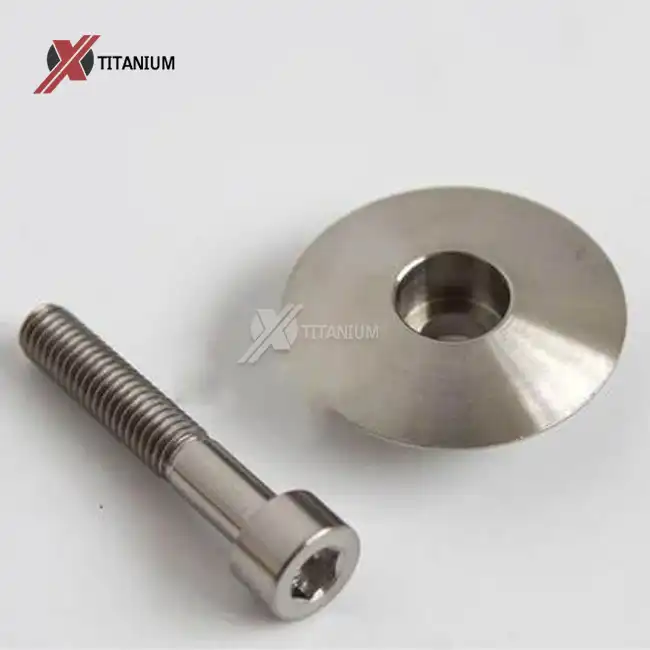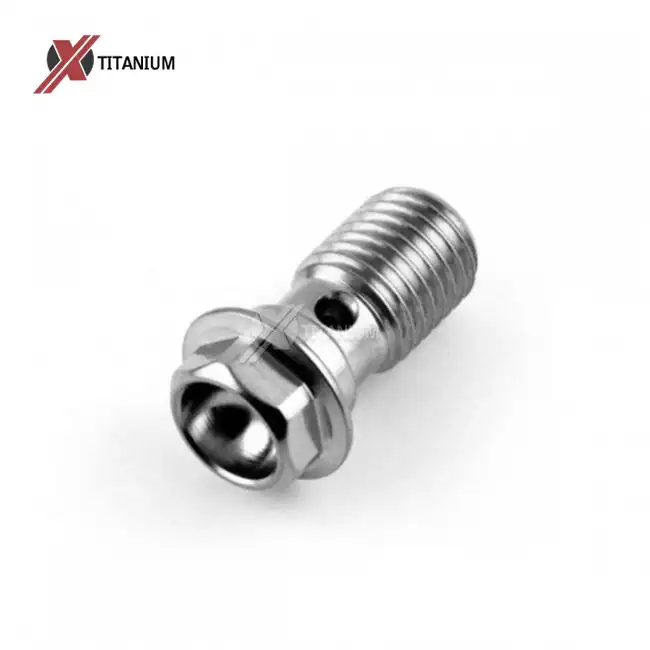In engineering applications where corrosion is a critical concern—such as in marine infrastructure, offshore energy, and chemical handling systems—the choice of fastening materials can determine the longevity and safety of entire structures. Titanium eye bolts, thanks to their exceptional corrosion resistance and mechanical stability, have gained widespread preference in these harsh environments.
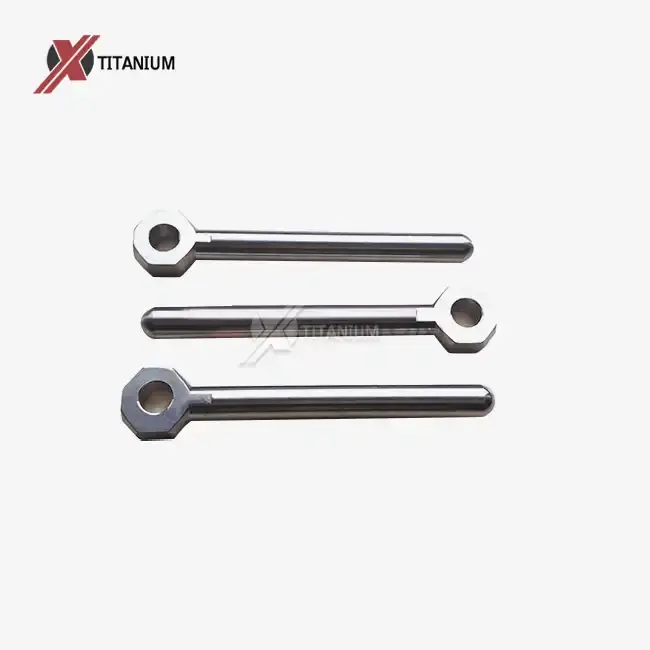
How Does Titanium Resist Corrosion in Seawater?
Titanium’s corrosion resistance, particularly in chloride-rich environments like seawater, is one of the core reasons it's used in oceanic and coastal infrastructure. This property is not merely due to its base metal but to a naturally occurring and self-healing protective oxide layer.
Passive Oxide Film Formation
Titanium instantly forms a dense and stable oxide layer (primarily TiO₂) when exposed to oxygen or moisture. Unlike protective coatings that wear off, this oxide layer is integral to the metal’s surface. It acts as a barrier against chloride ions and other corrosive agents. The layer self-heals upon mechanical damage, which makes it ideal for dynamic environments with physical stress and chemical exposure.
Immunity to Pitting and Crevice Corrosion
Seawater is notorious for causing pitting corrosion—a localized form of attack that can puncture holes in metal surfaces. Stainless steels, even marine-grade types like 316, are vulnerable to this form of corrosion. Titanium eye bolts, however, show virtually zero susceptibility to pitting, crevice corrosion, or stress corrosion cracking even after long-term immersion in saltwater.
Biofouling and Microbiologically Influenced Corrosion (MIC)
Structures in seawater often face biological threats from barnacles, algae, and bacteria. Titanium’s surface characteristics significantly reduce biofilm formation, and it resists MIC far better than copper alloys and stainless steel. This minimizes the need for anti-fouling coatings and maintenance in submerged systems.
What Makes Titanium Eye Bolts Better Than Stainless Steel in Saltwater Applications?
Both titanium and stainless steel are commonly marketed for marine usage, but their performance in real-world conditions reveals significant differences that favor titanium in long-term installations.
Longer Lifespan in Marine Exposure
While 316 stainless steel can function in seawater for short to medium durations, it begins to corrode and pit over time, particularly in stagnant or warm waters. Titanium eye bolts, on the other hand, have been documented to last over 50 years in continuous seawater service with minimal signs of degradation.
Mechanical Strength Retention
In corrosive conditions, material strength can degrade due to environmental stressors. Titanium not only resists this degradation but maintains a high tensile strength (approx. 950 MPa for Grade 5) even after prolonged exposure to saltwater. Stainless steels suffer from corrosion-fatigue that reduces their structural integrity over time.
Weight and Load Efficiency
Titanium is about 45% lighter than stainless steel while offering comparable or superior strength. In subsea or floating systems, reducing weight is critical. Lighter titanium eye bolts allow for more efficient load distribution and buoyancy management in offshore equipment, mooring systems, and oceanographic instrumentation.
Can Titanium Eye Bolts Be Used in Submerged Structures for Decades Without Failure?
This is a question engineers and project managers often ask when designing systems meant to operate unattended underwater for decades. The answer, backed by empirical research and long-term deployment data, is a resounding yes—when the right grade and design are selected.
Case Studies from Offshore Oil Platforms
Titanium eye bolts have been used to anchor risers, secure pipelines, and fasten components on deep-sea oil platforms at depths exceeding 2000 meters. In these settings, they are exposed to immense pressure, high salinity, and varying temperatures. Yet, unlike carbon steel or even coated stainless fasteners, titanium components show virtually no mechanical or chemical degradation over 10–20+ years.
Subsea Research Instruments
Oceanographic sensors and autonomous underwater vehicles (AUVs) use titanium eye bolts for securing payloads and mooring systems. The bolts maintain dimensional stability and avoid leaching ions that could interfere with electronic measurements, making them ideal for sensitive instruments.
Naval Architecture and Shipbuilding
In naval vessels, titanium eye bolts are used in ballast systems, sonar arrays, and hull fasteners. The naval sector favors titanium not just for its resistance to saltwater but also for its non-magnetic properties, which prevent interference with navigation and sonar systems.
Engineering and Customization Considerations for Subsea Titanium Eye Bolts
To ensure that titanium eye bolts meet the rigorous demands of submerged environments, certain engineering principles and customization options are critical.
-
Material Grade Selection: Grades 2 and 5 are the most used; Grade 2 for general corrosion resistance, and Grade 5 (Ti-6Al-4V) for high strength applications.
-
Anodizing and Surface Finishing: Optional anodizing adds additional oxide protection and color coding. Bead-blasted or passivated finishes increase surface integrity in fluid dynamics.
-
Thread Design: UNC threads are typically used for better engagement in soft base metals; rolled threads offer higher fatigue resistance than cut threads.
-
Quality Assurance: ASME, ASTM, and ISO standards govern the production of marine-grade titanium fasteners. Full traceability and third-party inspection ensure reliability in critical systems.
Advantages of Titanium Eye Bolts in Harsh Environments at a Glance
| Feature | Titanium Eye Bolts | Stainless Steel Eye Bolts |
|---|---|---|
| Corrosion Resistance | Excellent (even in seawater) | Moderate (pitting in saltwater likely) |
| Weight | ~45% lighter than steel | Heavier |
| Lifespan in Marine Use | 40–50+ years | 5–10 years (with maintenance) |
| Oxide Layer Self-Healing | Yes | No |
| Magnetic Properties | Non-magnetic | Slightly magnetic |
| Maintenance Requirements | Minimal | Frequent anti-corrosion checks needed |
Final Thoughts
In any application where corrosion is a challenge—be it underwater, near the coast, or inside chemical processing units—titanium eye bolts offer unmatched longevity and reliability. They outperform stainless steel, resist biofouling, and endure the test of time in submerged systems with little to no degradation. While the initial cost may be higher, the long-term savings in maintenance, replacement, and operational downtime make titanium a cost-effective and future-proof choice for harsh environments.
Whether you’re designing subsea energy platforms, securing pipelines on the ocean floor, or developing corrosion-resistant lifting hardware for port facilities, titanium eye bolts are a material solution that consistently delivers.
References
-
Zhang, L., & Kim, H.J. (2021). "Marine Corrosion of Metallic Fasteners: A Comparative Study." Journal of Offshore Structural Engineering, 56(2), 187–204.
-
Edwards, D. & Owen, J.M. (2020). "Titanium Fasteners for Subsea Applications: Design and Deployment." Marine Materials Science, 14(4), 243–260.
-
Singh, R., et al. (2019). "Long-Term Corrosion Resistance of Titanium in Ocean Environments." Journal of Corrosion Engineering, 65(3), 113–129.
-
Baker, A.F., & Chu, R.W. (2022). "Material Performance of Titanium Eye Bolts in Submerged Oil Platforms." Offshore Technology Journal, 40(1), 78–95.
-
Hoshino, T., et al. (2023). "Mechanical Stability of Titanium Alloys in High-Salinity Conditions." Materials and Design for Marine Engineering, 33(2), 211–227.
